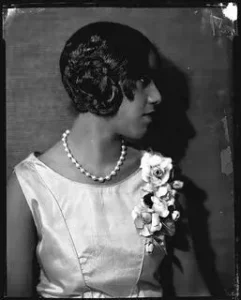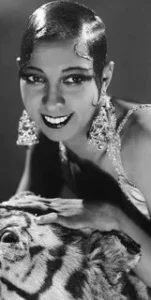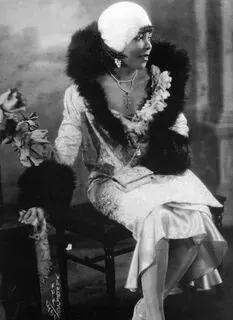Ever wondered what 1920s Black women’s fashion looked like and how it reflected the cultural shifts of the time?
The Roaring Twenties were a period of dramatic change for everyone, but particularly for Black women in the United States. Coming out of the hardships of World War I and into the Harlem Renaissance, Black women found new ways to express their identities through fashion.
They embraced the liberation of the Jazz Age with bold new styles, challenging societal norms while also creating a distinctive look that represented both their struggle and triumph. From flapper dresses to luxurious accessories, 1920s Black women’s fashion played a significant role in the social and cultural revolution of the era.
Let’s dive into how Black women’s fashion of the 1920s wasn’t just about looking stylish but also a reflection of their journey toward self-expression and empowerment.

The Impact of the Harlem Renaissance on 1920s Black Women’s Fashion
The Harlem Renaissance was a cultural, artistic, and intellectual explosion that gave Black Americans a platform to showcase their talents. Naturally, fashion was at the heart of this movement, as Black women in Harlem and across the US began to embrace bold, modern styles that reflected their growing independence.
- Flapper Dresses: One of the defining elements of 1920s Black women’s fashion was the flapper dress. These dresses were shorter than the traditional gowns of the previous era and featured loose, straight cuts that rejected the restrictive corsets of the Victorian era. This was a huge departure from previous styles and represented freedom—freedom of movement, self-expression, and the breaking of societal norms.
- Luxurious Fabrics: Black women who could afford to, embraced luxurious fabrics like silk, satin, and velvet, which were often worn during lavish parties and social gatherings. The economic boom of the time, despite its racial inequalities, allowed some Black women to splurge on materials that spoke to their aspirations and new social standings.
- Beaded Accessories: Intricate beading, fringes, and sequins became a staple of the era. Whether it was a beaded headband, long necklaces, or dresses adorned with sequins, accessories played a significant role in 1920s Black women’s fashion, elevating their style and making them stand out during this period of cultural celebration.
Hairstyles and Beauty Trends
Alongside the bold fashion choices, Black women in the 1920s also embraced daring new hairstyles and beauty trends. The ‘20s marked a departure from traditional hairdos to more contemporary styles that matched the modern wardrobe.
- The Bob Cut: Shorter hairstyles like the bob became immensely popular during this time. This sleek, short haircut was not only practical but also symbolized a break from the past. Many Black women took it a step further by adding finger waves, creating a smooth, elegant look that was widely admired.
- Marcel Waves: The 1920s Black women’s fashion scene wasn’t complete without Marcel waves, a popular hairstyle created using heated irons to make deep, glossy waves in the hair. This look added an air of sophistication and was often paired with luxurious headbands, giving the overall look a vintage glamour.
- Cosmetics Boom: The beauty industry also exploded during the 1920s. Black women began using face powders, lipsticks, and rouge to enhance their features. Some makeup brands even started creating products specifically for Black women, further promoting individuality and beauty within the Black community.
Flappers and Freedom: A Symbol of Empowerment
While the flapper movement is often associated with white women, Black women were equally influenced by the cultural shifts of the time. The flapper style didn’t just mean a change in clothing—it meant liberation from societal expectations.
- Challenging Norms: The flapper style embodied a rebellious spirit, rejecting the conservative clothing of the past. For Black women, wearing flapper dresses, bobbing their hair, and embracing bold fashion choices was a form of resistance against the double burden of racial and gender oppression.
- Nightlife and Jazz Influence: Jazz clubs in Harlem became a hub for showcasing Black culture, and fashion was at the forefront. Women often dressed to the nines when attending nightclubs, donning their best flapper dresses, fur shawls, and embellished headbands. The glitzy nightlife in Harlem not only influenced 1920s Black women’s fashion but also became a space for Black women to redefine their place in society.
The Role of Influential Black Women in Fashion
Several Black women became icons of 1920s fashion, influencing the broader American fashion scene while also carving out their own unique identity within the Black community.
- Josephine Baker: One of the most famous entertainers of the 1920s, Josephine Baker’s flamboyant costumes, bobbed hair, and elaborate stage outfits became legendary. She became a global sensation, and her bold fashion choices made her a style icon in both the US and Europe.
- Madame C.J. Walker: While not a designer, Madame C.J. Walker was one of the most influential Black businesswomen of the time. She became the first female self-made millionaire in America, building her empire through hair care products specifically designed for Black women. Her success in promoting beauty and personal care helped shape the broader fashion culture of the time.
Beyond the Flapper: Other Elements of 1920s Black Women’s Fashion
While the flapper dress and the glamorous eveningwear of the Jazz Age were certainly dominant in the 1920s, 1920s Black women’s fashion was not just about the party scene. There were other elements that defined everyday fashion for Black women during this era:
- Day Dresses: Simple, straight-line dresses made of cotton or linen were worn during the day. These dresses were more practical for everyday tasks but still reflected the new, modern silhouette of the time.
- Outerwear: Black women also embraced stylish outerwear such as fur coats, capes, and shawls. These items added sophistication to their outfits, especially during the colder months when eveningwear needed an extra layer of glamour.
- Footwear: Mary Jane heels, T-straps, and other heeled shoes became popular among Black women, as they reflected the elegance and femininity that were in style during the 1920s. Paired with silk stockings, these shoes completed the fashionable look of the era.

The Legacy of 1920s Black Women’s Fashion
What makes 1920s Black women’s fashion so special is not just the stylish clothing, but the deeper story it tells. The 1920s were a time of immense change, not only for the world at large but also for Black women who used fashion as a way to claim their identity and assert their place in society.
- Cultural Expression: Through their fashion, Black women were able to express their culture, creativity, and individuality. The boldness of their clothing choices symbolized their resilience and determination to push through the social and racial barriers that existed during that time.
- A New Image of Black Femininity: The 1920s allowed Black women to redefine what it meant to be feminine. By stepping away from restrictive Victorian fashion and embracing modern trends, they helped create a new image of what Black womanhood could look like—strong, independent, and stylish.
- Influence on Modern Fashion: The influence of 1920s Black women’s fashion can still be seen today. From contemporary flapper-style dresses to the ongoing popularity of bobbed haircuts, the fashion of the Roaring Twenties continues to inspire designers and fashionistas alike.
FAQs About 1920s Black Women’s Fashion
Q: What was the most iconic piece of fashion in the 1920s for Black women?
A: The flapper dress, with its shorter length and loose fit, was the most iconic fashion piece of the 1920s. Black women embraced this style as a symbol of freedom and empowerment.
Q: How did the Harlem Renaissance influence Black women’s fashion?
A: The Harlem Renaissance provided a platform for Black women to express their creativity and individuality through fashion. This cultural movement was key in pushing the boundaries of style and encouraging bold, modern looks.
Q: What role did Josephine Baker play in 1920s fashion?
A: Josephine Baker was a style icon of the 1920s. Her glamorous and daring outfits made her a global fashion figure, influencing not only Black women but fashion as a whole.
Q: Were Black women involved in the beauty industry during the 1920s?
A: Yes, Black women like Madame C.J. Walker played a significant role in the beauty industry, creating products specifically for Black women and promoting personal care and beauty standards that helped shape the fashion landscape.
Conclusion: 1920s Black Women’s Fashion—More Than Just Style
The legacy of 1920s Black women’s fashion goes far beyond glitz and glamour. It represents a pivotal time in history where Black women could finally use fashion as a tool for self-expression, empowerment, and defiance against the constraints of racism and sexism. Whether through the flapper dresses or the luxurious fabrics, Black women’s fashion in the 1920s was a powerful statement of identity and strength, and its influence is still felt in modern fashion today.
Read more: womenfashionwear.site

